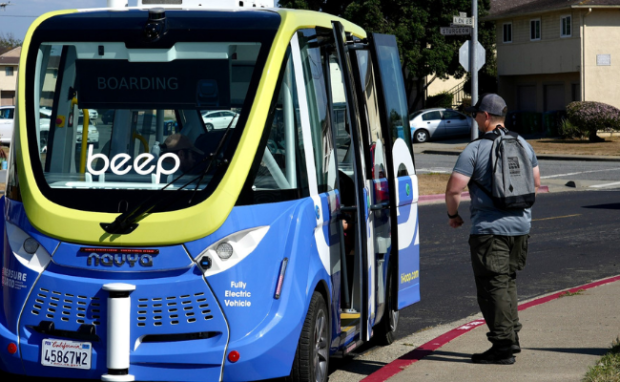Teledriving: First-ever remote taxi service opens in Vegas
German remote-driving startup Vay launched its first commercial service in Las Vegas, Nevada. It involves a “teledriver” or a remote driver who delivers rental cars to customers by controlling them online. Then, the client drives the rental vehicle to their destination. Afterward, teledrivers will deliver those vehicles to new clients.
Contrary to popular belief, remote work continues to thrive and evolve. Its latest iteration involves driving public transportation, which may become a work-from-home setup. Soon, you might be able to become a taxi driver from your home. More importantly, teledriving could start turning more physical labor into online professions.
This article will discuss how teledriving works and its potential benefits and risks. Later, I will share another exciting transportation trend.
What is teledriving?
Vay is the first company to launch teledriving services, so I will base my explanation on its website. As mentioned, it has teledrivers stationed in its headquarters that will control cabs via 5G networks.
They will deliver the vehicles to clients, who drive them to their destinations. Afterward, Vay drivers will take over to deliver them to new customers.
The first question most would ask is, “Why can’t the company remotely control its vehicles?” Tech news website New Atlas says Vay’s services are more expensive than regular taxis and rideshare vehicles.
“They can only compete by reducing labor and having the teledrivers move as many cars as possible, rather than being tied up taking passengers from A to B,” the website says.
Euronews Next says teledriving costs $0.30 (€0.28) per minute to drive the car and $0.03 (€0.028) per minute for stopovers. On the other hand, this emerging service could expand public acceptance of autonomous vehicles.
Other companies like Tesla are developing driverless vehicles, but only a few are willing to ride them. In 2022, Pew Research said 63% of US adults wouldn’t ride a driverless car.
You may also like: How AI reduces traffic and pollution
Only 21% are comfortable with having those on the road. Also, remotely driven vehicles don’t provide the same convenience as rideshare and regular cabs.
You still have to drive the vehicle, so you can’t relax and do other things like watching Netflix or attending Zoom meetings. Yet, teledriving could give people peace of mind by letting humans steer their automobiles.
“With teledriving, a human is in charge,” Vay CEO Thomas von der Ohe told CNBC. “This allows us to handle complex maneuvers, such as unprotected left turns, emergency situations, and road works based on human perception and decision-making ability.”
Other remote driving trends

San Francisco is also running a remotely driven public transportation project. Unlike teledriving, Beep runs a fixed bus route called the Loop around Treasure Island.
It makes seven stops connecting residential neighborhoods with roughly 2,000 people. Also, its all-electric vehicle doesn’t have a steering wheel or driver’s seat.
Still, it has a human attendant ready to take control with a handheld controller if an emergency arises. As a result, passengers said they felt secure inside the driverless bus.
“I didn’t feel unsafe,” said Dominic Lucchesi, an Oakland resident, who was one of the first to test the autonomous service. “I thought that it made some abrupt stops, but otherwise, I felt like I was riding any other bus for the most part.”
Tilly Chang, executive director of the San Francisco County Transportation Authority, explained, “Having the attendant on board makes everyone feel comfortable.”
“This is just a demonstration for now to see, ‘What does it look like, and how does it work to have a driverless shuttle in a low-volume, low-speed environment?’”
You may also like: AI copilot helps human pilots make flying safer
Beep project manager Shelley Caran said, “These shuttles are built for first-mile, last-mile, short connectivity routes. They’re not intended to take the place of a bus system.”
“The autonomous vehicle will have a better reaction time than a human, and it will offer a more reliable service because they won’t be distracted.”
Contrary to popular belief, these vehicles may bring more jobs. Nikolas Martelaro, a driverless vehicle researcher at Carnegie Mellon University, stated, “Trained operators are going to be required even as we increase automation.”
Conclusion
Vay launches its first commercial teledriving service in Las Vegas. Remote drivers deliver vehicles to customers so that they can drive to their destination.
Many companies have tried this service but haven’t launched it as paid public transportation. However, Vay’s trial could convince more countries to adopt this service.
Eventually, you might be able to join its workforce by having specialized controllers at home! Learn more about the latest digital trends at Inquirer Tech.